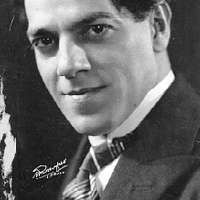Details

Henry Purcell
Fantasia Upon One Note
Daria Tedeschi Adams, violin
Maiya Papach, viola
Tamás Strasser, viola
David Huckaby, cello
Born into a musical family, Henry Purcell spent his boyhood in London as a chorister for the Chapel Royal. At eighteen he was appointed to a position as a court composer, and two years later he became the organist for Westminster Abbey, a position he held for the rest of his life. During the reigns of Charles II and James II, Purcell’s royal duties accounted for most of his music, but his court responsibilities shrank in the wake of the Glorious Revolution of 1688. Only in the last seven years of his short life did Purcell concentrate on the theater music for which he is best known today, including Dido and Aeneas and The Fairy Queen.
Purcell probably composed the Fantasia upon One Note around 1680, at the time when he prepared a number of Fantasias for a viol consort, an ensemble that had been a fixture of the King’s Private Musick since the mid-sixteenth century. Like the members of the violin family, viols are bowed string instruments that range from a small treble viol to the deep violone; unlike violins, viols have frets tied around the fingerboard, flat instead of arched backs, and in all sizes are held upright, like a cello. Purcell was one of the last composers to write for the disappearing viols, and these Fantasias may have been primarily undertaken as exercises for the twenty-year-old, modeled after an earlier compositional style. (This performance transports Purcell’s Fantasias to the modern string choir.)
The basic structure of a Fantasia or “Fancy” was to introduce a melody and then elaborate upon it using imitative counterpoint. A treatise written by the composer Christopher Simpson in 1667 could very well have been describing the work that young Purcell composed thirteen years later:
Of Musick design’d for Instruments … the chief and most excellent, for Art and Contrivance, are Fancies, of 6, 5, 4, and 3 parts, intended commonly for Viols. In this sort of Musick the Composer (being not limitted to words) doth imploy all his Art and Invention solely about the bringing in and carrying on of … Fuges, according to the Order and Method formerly shewed. When he has tryed all the several wayes which he thinks fit to be used therein; he takes some other point, and does the like with it: or else, for variety, introduces some Chromatick Notes, with Bindings and Intermixtures of Discords; or, falls into some lighter Humour like a Madrigal, or what else his own fancy shall lead him to: but still concluding with something which hath Art and excellency in it.
The joke of the Fantasia upon One Note, as made plain by the title, is that a middle voice drones on the note C throughout, holding steady through chromatic alterations, key changes, and tempo adjustments.
Aaron Grad ©2014

Heitor Villa-Lobos
Bachianas brasileiras No. 6 for Flute and Bassoon

Wolfgang Amadeus Mozart
Duo in G for Violin and Viola
Louis Spohr
Nonet in F
Julie Gramolini Williams, oboe
Alexander Fiterstein, clarinet
Charles Ullery, bassoon
Paul Straka, horn
Daria Tedeschi Adams, violin
Tamás Strasser, viola
Joshua Koestenbaum, cello
Christopher Brown, double bass
